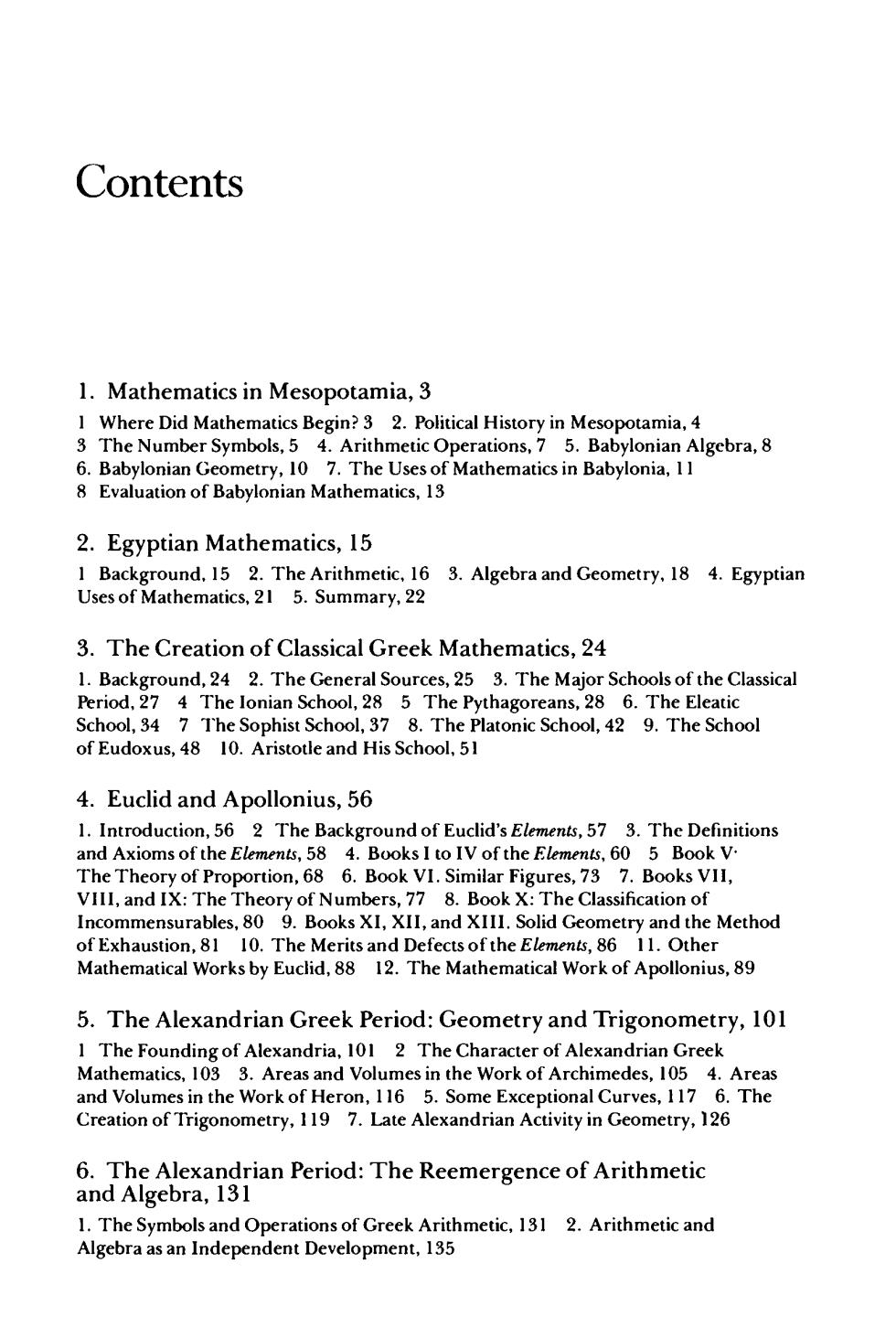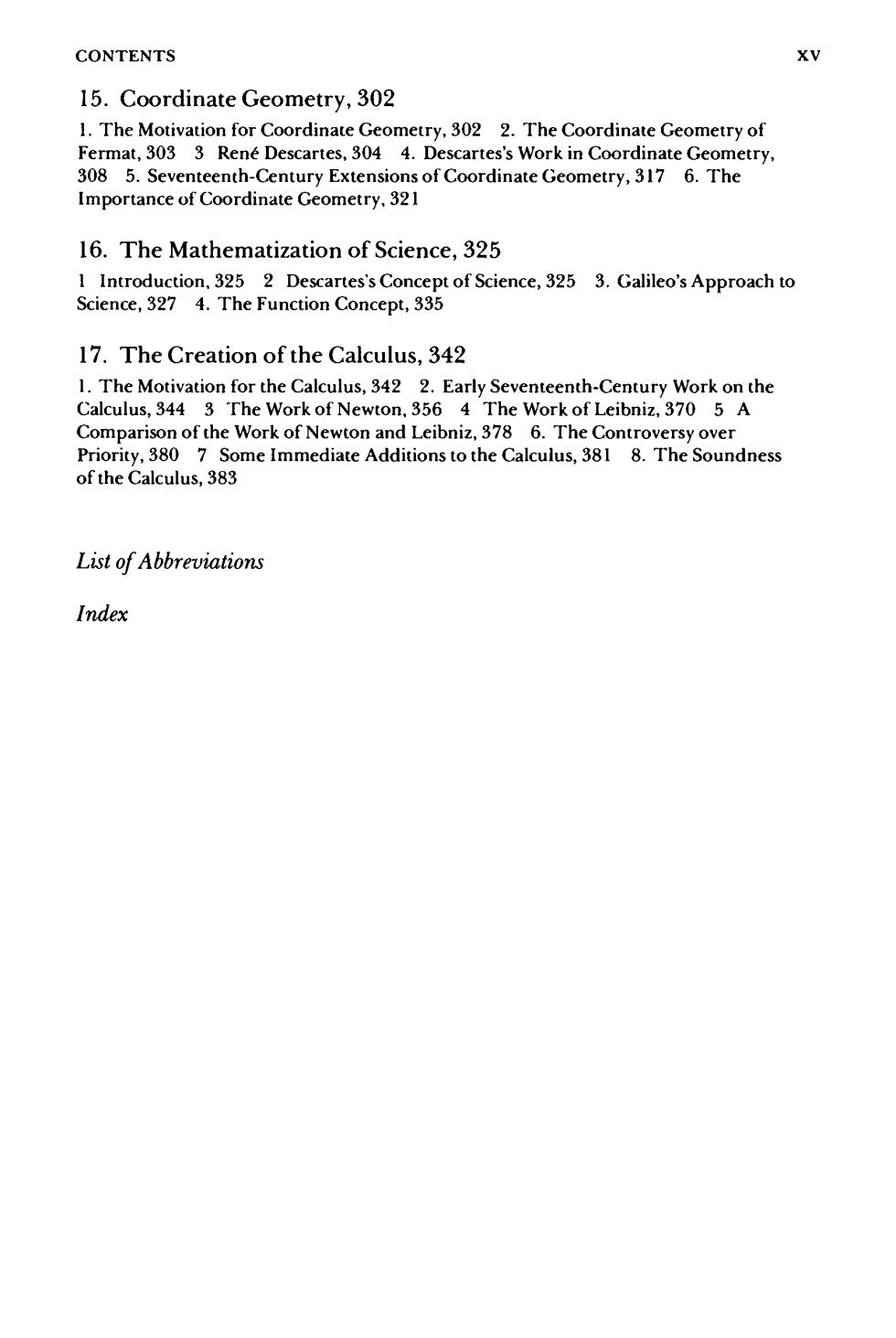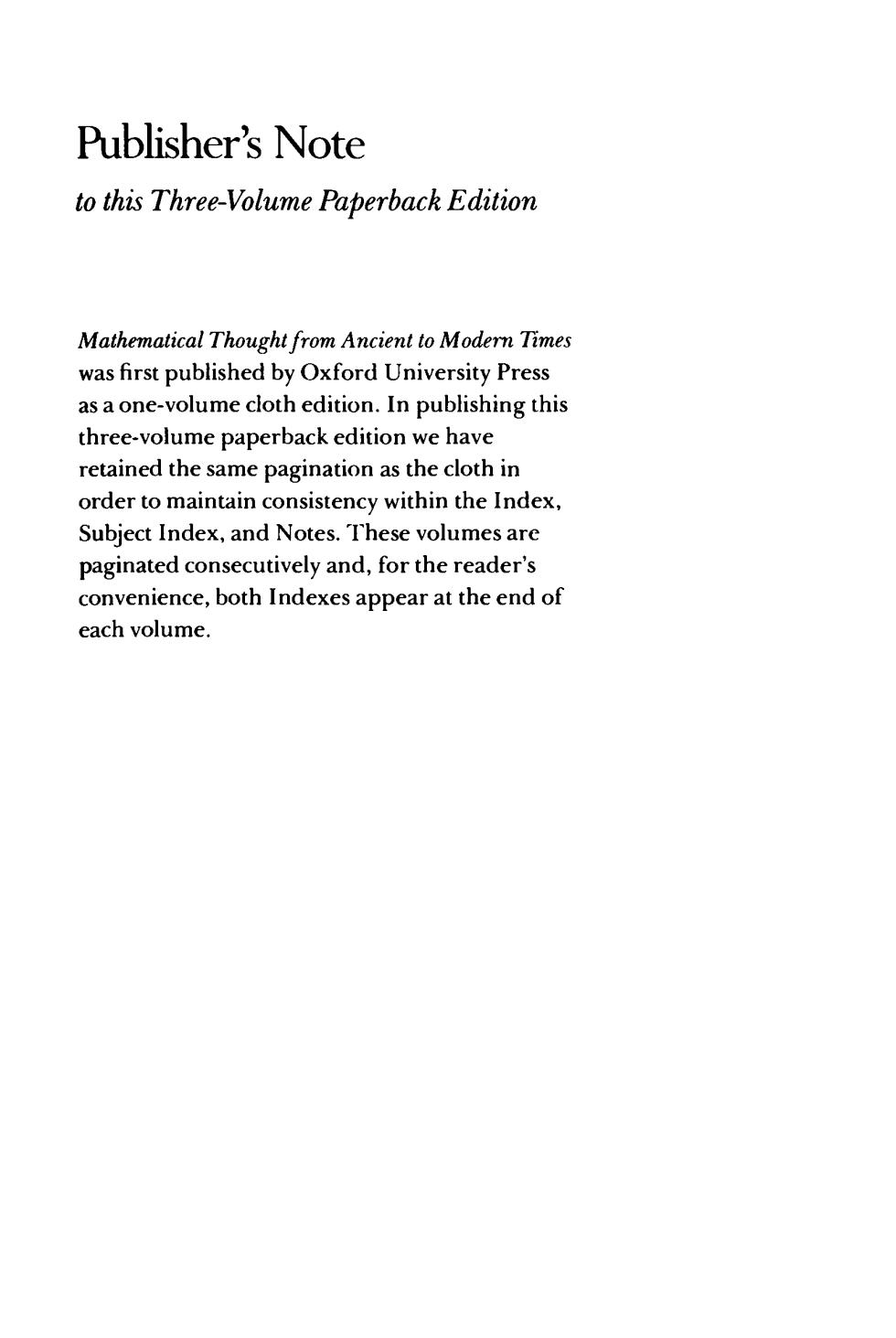
xii PREFACE The sources have been indicated in the bibliographies of the various chapters.The interested reader can obtain much more information from these sources than I have extracted.These bibliographies also contain many references which should not and did not serve as sources.However,they have been included either because they offer additional information,because the level of presentation may be helpful to some readers,or because they may be more accessible than the original sources. I wish to express thanks to my colleagues Martin Burrow,Bruce Chand ler,Martin Davis,Donald Ludwig,Wilhelm Magnus,Carlos Moreno, Harold N.Shapiro,and Marvin Tretkoff,who answered numerous ques tions,read many chapters,and gave valuable criticisms.I am especially indebted to my wife Helen for her critical editing of the manuscript,extensive checking of names,dates,and sources,and most careful reading of the galleys and page proofs.Mrs.Eleanore M.Gross,who did the bulk of the typing, was enormously helpful.To the staff of Oxford University Press,I wish to express my gratitude for their scrupulous production of this work. New York M.K. May 1972

Contents 1.Mathematics in Mesopotamia,3 1 Where Did Mathematics Begin?3 2.Political History in Mesopotamia.4 3 The Number Symbols,5 4.Arithmetic Operations,7 5.Babylonian Algebra,8 6.Babylonian Geometry,10 7.The Uses of Mathematics in Babylonia,11 8 Evaluation of Babylonian Mathematics,13 2.Egyptian Mathematics,15 3.Algebra and Geometry,18 4.Egyptian ematics,2 3.The Creation of Classical Greek Mathematics,24 1.Background,24 2.The General Sources,25 3.The Major Schools of the Classical Period,27 4 The lonian School,28 5 The Pythagoreans,28 6.The Eleatic School,34 7 The Sophist School,37 8.The Platonic School,42 9.The School of Eudoxus,48 10.Aristotle and His School,51 4.Euclid and Apollonius,56 1.Introduction,56 2 The Background of Euclid's Elements,57 3.The Definitions and Axioms of the Elements,58 4.Books I to IV of the Elements,60 5 Book V. The Theory of Proportion,68 6.Book VI.Similar Figures,73 7.Books VII, VIIl,and IX:The Theory of Numbers.77 8.Book X:The Classification of nsurables.80 9.Books XI,XII,and XIII.Solid Geometry and the Method of Exhaustion.81 10.The Merits and Defects of the Elements.86 11.Other Mathematical Works by Euclid,88 12.The Mather matical Work of Apollonius,89 5.The Alexandrian Greek Period:Geometry and Trigonometry,101 1 The Foundingof Alexandria,Cha Mathe acter of Alexandrian Greck Area and Volumes in the Work of Archimedes,10 umes in the Work of Heron,116 5.Some Exceptional Curves,117 6.The and Volumes Creation of Trigonometry,119 7.Late Alexandrian Activity in Geometry,126 6.The Alexandrian Period:The Reemergence of Arithmetic and Algebra,131 1.The Symbols and Operations of Greek Arithmetic,131 2.Arithmetic and Algebra as an Independent Development,135

xiv CONTENTS 7.The Greek Rationalization of Nature,145 1.The Inspiration for Greek Mathematics.145 2 The Beginnings of a Rational View of Nature,146 3 The Development of the Belief in Mathematical Design.147 4.Greek Mathematical Astronomy,154 5 Geography,160 6.Mechanics,162 7 Optics,166 8 Astrology.168 8.The Demise of the Greek World,171 1.A Review of the Greek Achievements,171 2.The Limitationsof Greek Mathematics,173 3.The Problems Bequeathed by the Greeks,176 4 The Demise of the Greek Civilization,177 9.The Mathematics of the Hindus and Arabs,183 1 Early Hindu Mathematics,183 2.Hindu Arithmetic and Algebra of the Period A.D.200-1200,184 3.Hindu Geometry and 'Trigonometry of the Period A.D.200-1200,188 4.The Arabs,190 5.Arabic Arithmetic and Algebra,191 6.Arabic Geometry and Trigonometry.195 7 Mathematics circa 1300.197 10.The Medieval Period in Europe,200 1.The Beginnings of a European Civilization,200 2.The Materials Available for Learning.201 3.The Role of Mathematics in Early Medieval Europe,202 4 The Stagnation in Mathematics,203 5.The First Revival of the Greek Works,205 6 The Revival of Rationalism and Interest in Nature,206 7.Progress in Mathematics Proper,209 8.Progress in Physical Science,211 9.Summary,213 11.The Renaissance,216 1 Revolutionary Influences in Europe,216 2.The New Intellectual Outlook,218 3.The Spread of Learning,220 4 Humanistic Activity in Mathematics,221 5.The Clamor for the Reform of Science,223 6 The Rise of Empiricism,227 12.Mathematical Contributions in the Renaissance,231 I Perspective,231 2.Geometry Proper,234 3 Algebra,236 4.Trigonometry, 237 5.The Major Scientific Progress in the Renaissance,240 6 Remarks on the Renaissance.247 13.Arithmetic and Algebra in the Sixteenth and Seventeenth Centuries,250 1.Introduction,250 2.The Status of the Number System and Arithmetic,251 Symbolism,259 4.The Solution of Third and Fourth Degree Equations.263 5.The 'Theory of Equations,270 6 The Binomial Theorem and Allied Topics,272 7 The Theory of Numbers,274 8.The Relationship of Algebra to Geometry,278 14.The Beginnings of Projective Geometry,285 netry,285 hekene work of Desg principles. 288 The Emergence of New

CONTENTS XV 15.Coordinate Geometry,302 1.The Motivation for Coordinate Geometry.302 2.The Coordinate Geometry of at,303 3 Rene Descartes.304 4.Desc tes's Work in C mporianeGrohc 308 5.Sevente rdinat cometry,321 16.The Mathematization of Science,325 1 Introduction.325 2 Descartes's Concept of Science,325 3.Galileo's Approach to Science,327 4.The Function Concept,335 17.The Creation of the Calculus,342 1.The Motivation for the Calculus,342 2.Early Seventeenth-Century Work on the Calculus,344 3 The Work of Newton,356 4 The Work of Leibniz,370 5 A Comparison of the Work of Newton and Leibniz,378 6.The Controversy over Priority,380 7 Some Immediate Additions to the Calculus,381 8.The Soundness of the Calculus,383 List of Abbreviations Index

Publisher's Note to this Three-Volume Paperback Edition Mathematical Thought from Ancient to Modern Times was first published by Oxford University Press as a one-volume cloth edition.In publishing this three-volume paperback edition we have retained the same pagination as the cloth in order to maintain consistency within the Index, Subject Index,and Notes.These volumes are paginated consecutively and,for the reader's convenience,both Indexes appear at the end of each volume